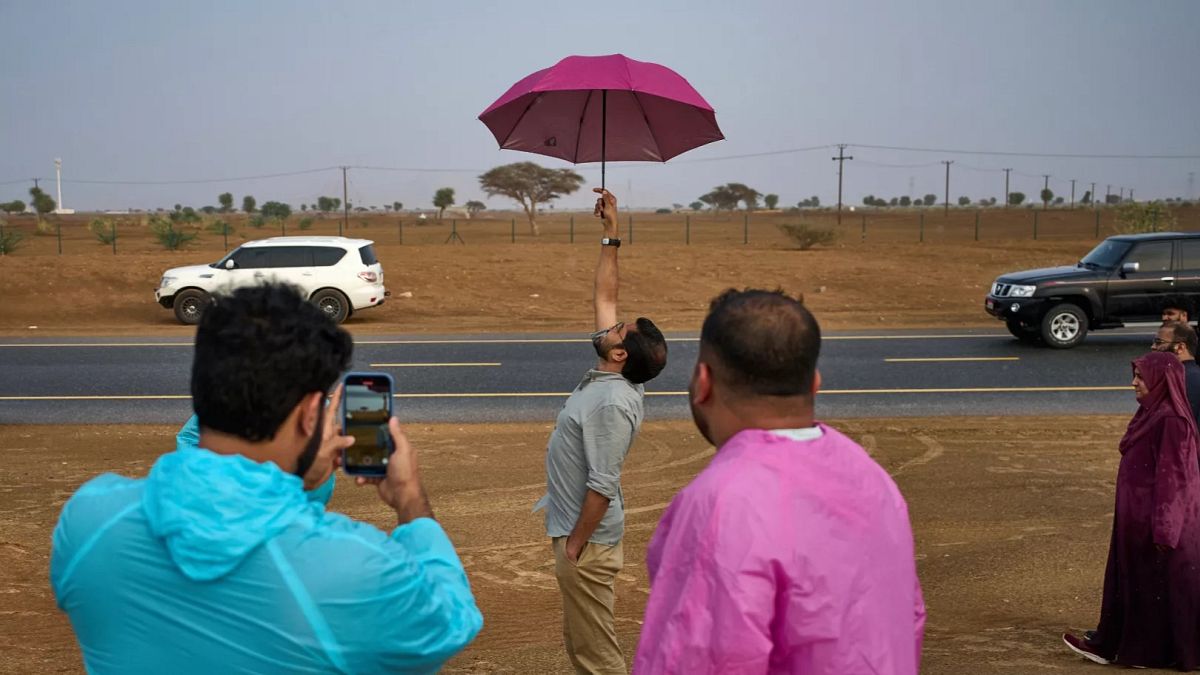

In recent times, our planet has exhibited extraordinary and varied climate phenomena, spanning intense heatwaves and innovative environmental strategies. These events highlight the ongoing challenges of climate change, prompting both concern and creative responses from communities worldwide.
In the United Arab Emirates, a nation often confronting arid desert conditions, rain represents both opportunity and peril. The dual-edged nature of rain is particularly exemplified by recent flash floods following cloud seeding efforts aimed at alleviating water scarcity. While this artificial stimulation of rain has shown potential in addressing water needs, it also underscores the fragile balance between harnessing nature’s resources and managing its sometimes-unintended impacts. As the UAE continues to refine its approaches, it stands as a poignant example of how modern science and natural phenomena intertwine.
Meanwhile, an innovative solution emerges in the agricultural sector with a promising eco-friendly approach utilizing algae. Researchers have found that growing algae on dairy wastewater can reduce the reliance on traditional mineral fertilizers by up to 25%. This not only aids in cutting down pollution but also holds potential in decreasing European dependence on external fertilizer supply chains. Such initiatives highlight the significance of integrating sustainability into traditional practices, reflecting a growing global imperative to adapt intelligently in the face of environmental concerns.
In Canada, the far reaches of British Columbia have experienced unprecedented heat, setting a new record for September temperatures in Lytton at a scorching 40°C. This matches historical highs and raises awareness about the evolving climate patterns in northern regions. The Canadian experience is mirrored by extreme weather elsewhere, including a recent hailstorm that affected parts of Kansas and Oklahoma, underscoring the shared global reality of weather extremes.
Notably, devastating floods in Punjab, India, have unfolded as the monsoon rains inundated large swathes of fertile land, including bright green rice paddies poised for harvest. The destruction spans hundreds of thousands of acres of crucial crops, leaving local farmers grappling with profound losses. This tragedy speaks to the profound impact of weather anomalies on livelihoods, particularly in regions heavily dependent on agriculture. Observing these patterns calls for enhanced resilience and support for affected communities as they navigate recovery.
Further compounding the climate challenge, new research has emerged illustrating a rise in lightning-sparked wildfires. These naturally ignited fires tend to occur in more remote areas, allowing them to expand and inflict significant damage more rapidly than human-caused counterparts. The implications of increased wildfire prevalence include greater risks to public safety and health, attributed largely to the volume of smoke these fires produce. As efforts continue to manage and mitigate these risks, the findings serve as a poignant reminder of the intricate and cascading effects of climate change.
Amidst these remarkable examples of climatic and environmental action, it becomes clear that adaptation and innovation are not just options but necessities. The situations outlined here reflect the dynamic interplay between human ingenuity and the natural world, prompting both challenges and opportunities as we seek to coexist sustainably with our planet’s evolving climate.
Source: {link}
